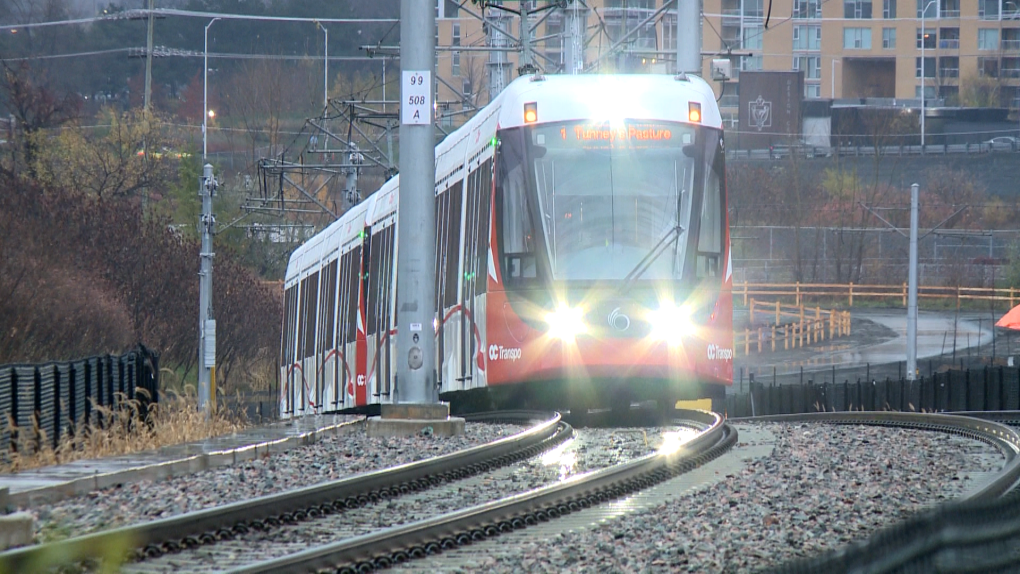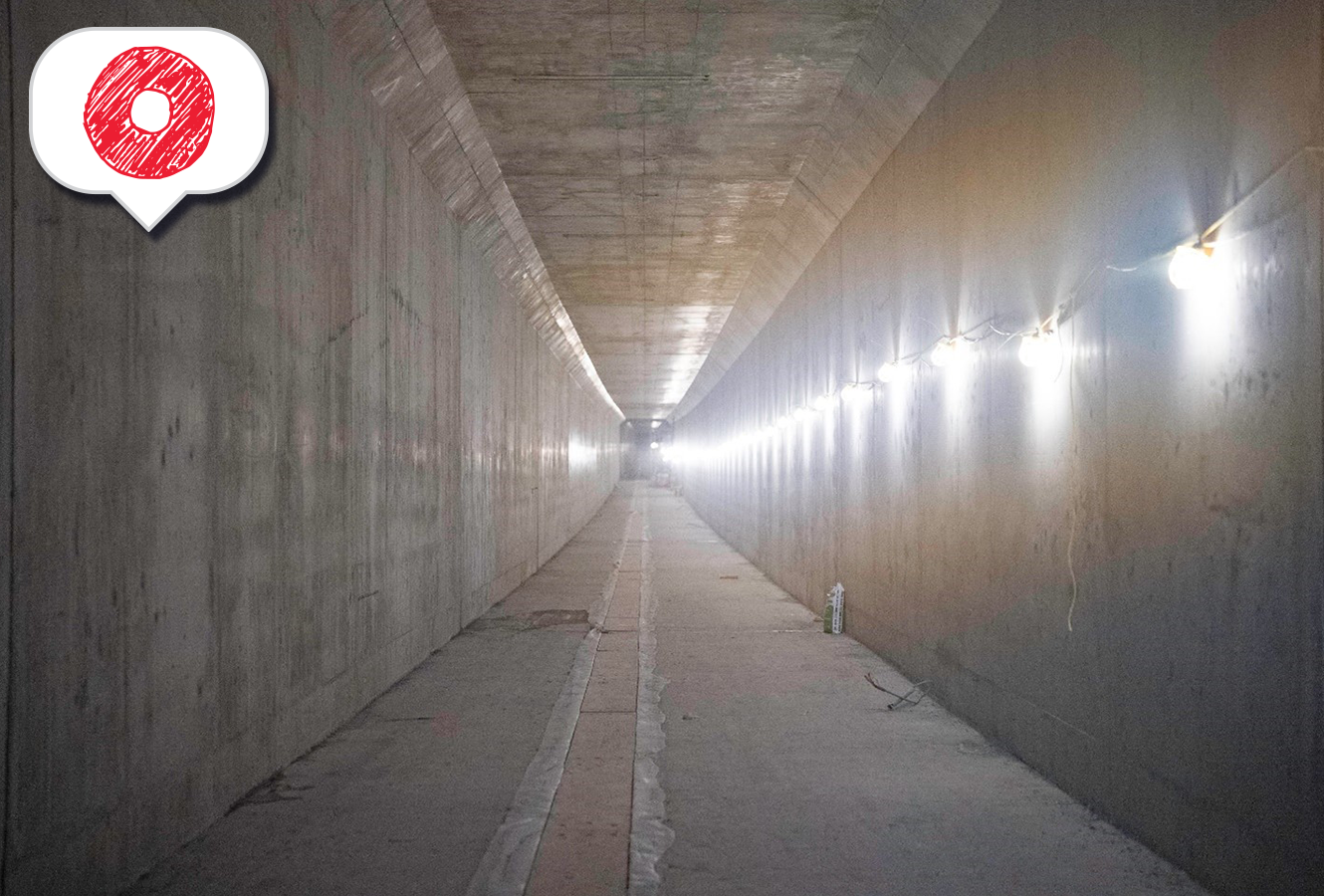Project Spotlight: Parkway Tunnel
The O-Train West Extension is one of Ottawa’s most complex construction projects.
Extending the O-Train System farther west from Tunney’s Pasture to Moodie Drive and Algonquin College is well underway. If you have ridden a bus in this area, you can see that we’re working hard to convert your current bus journey to rail.
While you’ve seen the work that is happening on the surface, The Next Stop Blog team is giving you a sneak peek on what is happening below ground on the Parkway Tunnel.
Approximately ten metres below the surface, crews are constructing a new underground tunnel that will see trains travel between Lincoln Fields Station, under Byron Linear Park, and through the Kichi Zìbì Mìkan to Kichi Zìbì Station.
The complete structure of the Parkway Tunnel, January 2024.
Click the image above for a closer look.
Let’s dig into cut and cover tunnelling and learn more about the O-Train West Extension’s Parkway Tunnel.
What is Cut and Cover?
The tunnels on the O-Train West Extension Project are being built using one of the oldest tunnel methods, known as cut and cover.
Cut and cover is a method of tunnelling where a trench is excavated, a tunnel structure is built, and then covered over. This method contrasts with bored tunnels, which are constructed using tunnel-boring machines deep underground.
Each cut and cover tunnel section will be constructed using the following steps:
- Excavation: The first step is to excavate a trench along the desired tunnel alignment. This excavation is typically done using heavy machinery such as excavators or backhoes.
- Tunnel Structure: Once the trench is excavated, the tunnel structure is constructed within it. This structure may be made of concrete, steel, or other materials depending on the specific requirements of the project.
- Covering: After the tunnel structure is in place, the trench is covered over to restore the surface above. This may involve backfilling the trench with soil or other materials and reconstructing any surface features that were disrupted during excavation.
- Surface Restoration/track work: Finally, the surface above the tunnel is restored, including the Kichi Zìbì Mìkan and Richmond Road.
Where and when will tunnel construction take place?
There are two tunnels currently being constructed on the O-Train West Extension.
The 3-kilometre Parkway Tunnel will run between Kichi Zìbì Station and Lincoln Fields Station underneath the Kichi Zìbì Mìkan and Byron Linear Park.
The 270-metre Connaught Tunnel will travel from Connaught Park, underneath Connaught Avenue, to Queensview Station.

3-kilometre Parkway Tunnel
Click the image above for a closer look.

The 270-metre Connaught Tunnel
Click the image above for a closer look.
Construction Progress

Construction of the Parkway Tunnel in 2021
Click the image above for a closer look.

Construction of the Parkway Tunnel in 2022
Click the image above for a closer look.

Construction of the Parkway Tunnel in 2024
Click the image above for a closer look.
Crews began preparing for Parkway Tunnel construction in 2019 by relocating sewers, watermains and other utilities before shifting roads and pathways to make space for digging. By October 2023, crews achieved a significant milestone when they completed excavating the tunnel. In total, 500,000 metric tons of earth was removed.
Now, with the excavation phase complete, crews are focused on completing the tunnel’s walls and roof. Pouring of the concrete structure is expected to be complete by the end of this year. To optimize the building sequence, the team is using a special piece of equipment known as the Everest Traveler formwork system which allows for the tunnel walls and roof to be constructed at the same time. This is a hydraulic system that allows the team to pour 250 cubic metres of concrete every 10 days and can be modified at certain points as the track alignment bends or curves.

The Everest Traveler formwork system
Click the image above for a closer look.
With various sections of the tunnel walls and roof complete, the construction team will begin installing track infrastructure later this spring. As more sections of the tunnel’s structure are completed, track installation will advance further throughout the tunnel.
A renewed Byron Linear Park

Byron Linear Park
Click the image above for a closer look.
As we approach the end of the project, work will take place to restore Byron Linear Park which will be enhanced to include more trees, less pavement, more public art, and additional plaza space for local events.
Stay up to date on the O-Train West Extension progress by signing up for our
newsletter or visiting the
project website.

www.octranspo.com

















